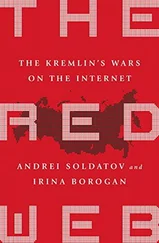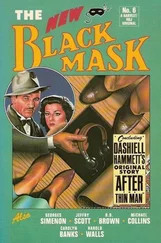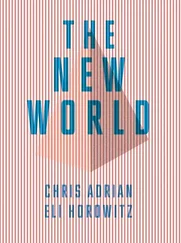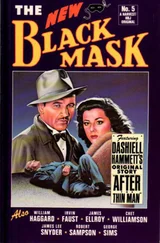Vers une musique informelle (1961)
LECTURE 1
Personal experiences with the ‘Darmstadt school’ – Musique informelle does not obey outside laws and forms – First tendencies as early as 1910, but not followed up consistently – Critique of ‘expression’ and subjectivity – Progress in control over the material – Loss of tension – Dodecaphony as a consequence of this development, aversion to repetition – Reason for the current controversy, the pitch material – Webern’s demand for as many ‘connections’ as possible; no guarantee of truth content – Freedom and ‘large forms’ – Need for order, the semblance of necessity – Schoenberg: the polarity of the thoroughly organized and the free – Serial and motivic-thematic composition
LECTURE 2
Serial and motivic-thematic composition (continued) – The relational concept and critique of the element concept – No hypostasis of relation, danger of automation – Serial music accused of being mechanical – The mechanical in traditional music – The possibility of liberation from the mechanical, the concept of time – Hatred of the subject, John Cage and his school – Abstract negation of domination of nature, positivism in music, critique – The concept of musical material – Histoire oblige ; the subject of music – Music does not communicate – Reconstruction of aesthetics – Demands on a musique informelle – Musique informelle as anticipation of freedom
The Function of Colour in Music (1966)
LECTURE 1
Colour is historically the ‘latest’ dimension of music – Excursus: Riegl’s conception of artistic will – Qualitative differences between musical dimensions – The twofold meaning of the ‘technical’ in composition – Instrumental ‘realization’ of earlier music (Bach) – The sound of the Classical orchestra, Viennese Classicism (I) – The idea of the balanced sound surface – Infinitude of the string sound – The spiritual dimension of orchestration (Beethoven) – The art of orchestration and differentiation – The idea of humanity and starkness of sound; poverty and abundance in instrumentation – The primacy of thematic-motivic work over Klangfarbenmelodie – Emancipation of the sonic dimension – How does one move beyond tonal instrumentation?
LECTURE 2
The Classical orchestra, Viennese Classicism (II); Webern and Berg – The twofold character of constructive instrumentation – Berlioz: the separation of colour from composition – The compositional concept of the melodic and of rhythm – Study of instruments and instrumentation; the functional nature of instrumentation – Problems of instrumentation; relation to the other dimensions of composition – The critics’ catchphrase of ‘brilliant orchestration’ – Critique of instrumentation – Incorporation of colour into composition: Wagner – Tendencies towards disintegration in Strauss, Mahler, Debussy – Rupture of unity, the disenchantment of the orchestra
LECTURE 3
Refunctioning of sound in the Second Viennese School – The structural change in instrumentation in Schoenberg – Chamber Symphony, op. 9 – Five Orchestral Pieces , op. 16 – Mobility of colour, colours are used like thematic shapes – Change in the function of sound – Antagonistic desiderata: clarity and Klangfarbenmelodie – Erwartung , op. 17 – Die glückliche Hand , op. 18: constructive instrumentation as a technique for large-scale form – Pierrot lunaire , op. 21 – Berg’s Wozzeck – Instrumentational variation – ‘Programming from above’; performance instructions in Berg’s Lyric Suite – Musical interpretation and constructive instrumentation – Colour retains something accidental, it is not absolute – The emancipated sonic dimension and the primacy of imagination – Colour is a function of the other dimensions – Polyphony as a condition for productive instrumentation; voice and sound – Current relevance of the sonic dimension – Unity of construction and colour is unity of something internally differentiated
The Young Schoenberg (1955)
[…] 1that I was not guided by any music-historical interests. Nor do I wish to discuss these matters in order to round out or correct the image of a great composer, though I hope that both aspects will be touched on as a side effect – namely, that I can both show you some music-historically remarkable things and contribute to an overall picture of Schoenberg. But we know, after all, that the idea of this music festival in Kranichstein 2is really for us to attempt, in very serious and concentrated work, to advance the musical consciousness of the present day and, if I might put it thus, to bring it to a form of self-consciousness, a consciousness of itself. And the reason I have decided to speak about the early Schoenberg – with the explicit approval of Mrs Schoenberg, 3as it happens – is that the works in question are quite especially relevant to our present situation.
You may know that I have, on various occasions, developed the argument that all of Schoenberg’s decisive innovations can already be found in his early works, extending roughly until op. 10; and that, if one understands those works correctly, the later works will almost be self-explanatory, they will no longer present any difficulties. Now, in our present context it is not a matter of promoting an understanding, for I think I can assume that almost all of you know and understand the later works of Schoenberg quite well. Rather, the problem is a different one. This claim that the decisive innovations by Schoenberg are already evident in the early works – what does it actually mean? It means that the experiences, the basic experiences that later found their own, very pure style, that were later developed with the utmost rigour, these basic experiences were already garnered here, where they were formulated in varying degrees with the traditional material of music. Now, I see the current relevance of those youthful works precisely in those basic experiences. For it seems to me that New Music, in its current phase and in the way people operate today with the twelve-note technique in particular, like a recipe, something ready-made and given, has forgotten those basic experiences – or, as I put it in my essay ‘The Aging of the New Music’, referring to a passage from Kierkegaard, that in the place where the Wolf’s Glen once yawned terribly there is now a railway bridge from which travellers can look down into the abyss safely and comfortably. 4In other words, the material developed by Schoenberg has now to a large extent become common property and, crudely put, is now available too cheaply, at least among those younger composers who can be taken seriously, but this comes at the price of losing the experiences for which it was once made; these methods, then, have mostly lost the significance they had when they originated.
At this point, let me avert a misunderstanding. Unfortunately, especially in recent times, I have discovered that anyone who tries to go beyond a mere factual survey and to develop artistic matters further, to approach them in a thinking way, exposes themselves to such manifold misunderstandings that one really cannot be careful enough, so I have genuinely found myself somewhat in the situation of the burnt child who dreads the fire. So please do not misunderstand me as taking any restorative approach or presenting a laudatio temporis acti , as if I were saying, ‘Yes, those were the good old days fifty years ago, when the likes of us were booed and there was really something happening, whereas now no one gets worked up anymore and everything has become so non-committal.’ I do indeed believe that even this very external aspect, the fact that it was a scandal at the time and no longer is today, 5that it reveals something quite central. But I will not develop that any further here. And let me also avoid a further misunderstanding and pre-empt an objection that I would normally expect particularly from the young composers among you. Because you could say to me, ‘Why are you getting so worked up? That’s really all terribly sentimental. It is the fate of all new achievements in art that the new discoveries find expression in the material and the treatment of the material, and that the original inner tensions that once spawned this material will pass, that the material will then stand on its own; and now that the twelve-note technique has been established, it would be a nonsense to expect every chord and every counterpoint to have the same tension that such a chord would have had in the early works of Schoenberg or Anton von Webern before the invention of dodecaphony.’ Well, there is certainly something in that. And far be it from me to say that the same shudder [ Schauer ] once caused by certain sounds, like the one I will demonstrate to you in a moment, that this same shudder should be conserved or sought anew. The concept of a ‘conserved shudder’ is comical in itself, and I hope you will not think me so foolish as to advocate such a conserved shudder. But I nonetheless think that one should not make things too easy for oneself with this idea of conservation. For as true as it may be – and I am going somewhat against traditional logic here in favour of dialectic logic, as I simply happen to be an adherent of the latter – as true as it may be that these chords, these musical constructs, fundamentally change in their form, it is equally true that something of this element must be preserved; and that, if musical elements once filled with inner tension genuinely change into mere material, then this material itself loses the sense it formerly had. So I do not wish to use these things in order to encourage you to create similar configurations, to turn the music towards the representation of a similar expressive or constructive sense as the young Schoenberg did. That is out of the question, and I would once again ask you emphatically not to understand my words in this way. But I do think that the question of the sense of every musical event, which arises in an extraordinarily powerful way in Schoenberg’s early music, must equally be posed in New Music. So this means that mere consistency, in the sense that every note is determined by some mathematical or other principles, is not enough, that every note must rather have meaning within the purely musical functional context in which it appears. And I think that one can direct this question as to the sense of each individual musical element at the young Schoenberg, and that one can better understand this demand through his music; but it goes without saying that the relevant characters today, and generally the question of the musical sense that must be organized and created, is something entirely changed, something entirely different from what Schoenberg, the young Schoenberg, was dealing with. By examining the early works, or touching on a few aspects of early Schoenberg in a highly fragmentary fashion, I hope simply to help you rediscover this dimension, the idea that all musical elements must have a musical sense and not simply fit, much as Kolisch 6and I, in our joint lecture last year, tried to elaborate the representation of musical sense in traditional music from the perspective of modern music, or roughly in the same way that Křenek set up his composition course last year. 7But you must not take that literally; you should simply learn these things in a comprehensible and concrete way that has been so widely forgotten today; for the situation in which we now find ourselves is really that composition has, in a sense, become too easy, and this becoming-too-easy of composition holds an indescribable danger precisely because the demands placed by this material in order to identify itself at all are those of musical sense, whereas, if one applies this newly won material to compositions – if they are senseless or primitive – the application of this material is not at all justified. So I will certainly try to make the young composers in particular, the twelve-note composers, be more self-critical in their own methods by measuring what they do against the indescribable wealth and indescribable substance that can be found precisely in the young Schoenberg, and which is the template or the precondition for the asceticism, for all the refusals Schoenberg later undertook.
Читать дальше












